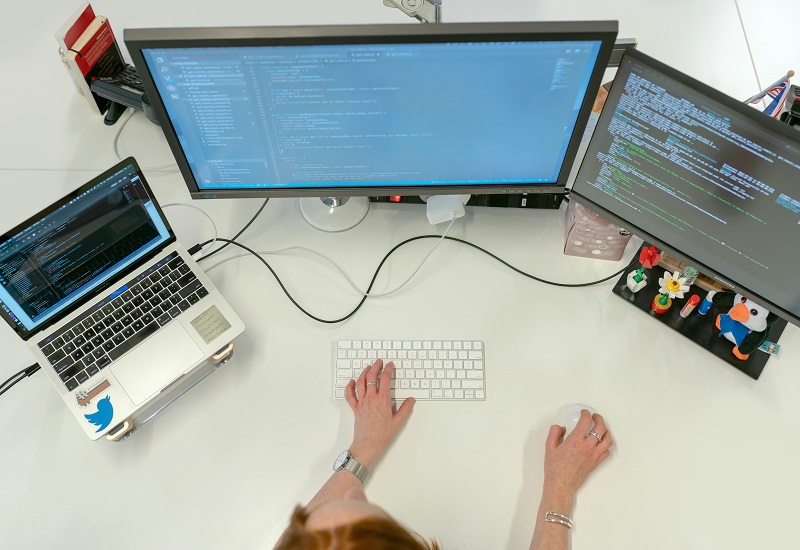The Role of EdTech Startups in Bridging the Digital Divide in Maryland Schools

The digital divide is a complex issue that requires multifaceted solutions. In Maryland, EdTech startups are playing a critical role in addressing this challenge by providing access to devices, internet connectivity, cloud-based platforms, and digital literacy resources. Through their innovative work, these startups are helping to create a more equitable education system, ensuring that all students have the tools they need to succeed. As they continue to grow and expand, the impact of EdTech startups on Maryland’s schools will only deepen, helping to close the digital divide for future generations.
Understanding the Digital Divide in Maryland:
Before exploring how EdTech startups are addressing the digital divide, it’s important to understand what this gap looks like in Maryland. The digital divide encompasses more than just access to devices; it also includes differences in internet connectivity, digital literacy, and the quality of technology available to students.
In Maryland, students in urban areas may have access to high-speed internet and state-of-the-art devices, while those in rural or economically disadvantaged regions often struggle with outdated technology or limited internet access. This divide became even more pronounced during the COVID-19 pandemic, when many schools shifted to online learning. The sudden transition exposed glaring inequalities, with some students unable to participate fully in remote education due to lack of resources.
The Role of EdTech Startups:
EdTech startups are uniquely positioned to help bridge this gap. These companies are agile, innovative, and focused on creating scalable solutions to pressing educational challenges. In Maryland, several startups are working to ensure that all students have access to the technology and tools they need to thrive in the modern learning environment.
By offering affordable, user-friendly platforms, EdTech startups are making technology more accessible to schools that may not have the budget for expensive solutions. Additionally, many of these companies are focused on providing educational resources that can be used both in and out of the classroom, helping to close the gap between students with home internet access and those without.
Providing Access to Devices and Connectivity:
One of the most significant ways EdTech startups are bridging the digital divide in Maryland schools is by helping to provide access to devices and reliable internet connectivity. Many schools, particularly those in underfunded districts, struggle to provide enough laptops, tablets, or other devices for all students. Startups are partnering with schools to offer affordable devices, ensuring that more students have the tools they need to engage in digital learning.
In addition to providing devices, EdTech companies are also working on solutions to address internet connectivity issues. Some startups are creating low-cost internet access options specifically for students in underserved areas. For example, Wi-Fi hotspot solutions allow students to connect to the internet even in regions where high-speed broadband is not readily available. These innovations are particularly valuable for rural Maryland communities where infrastructure development may lag behind.
Leveraging Cloud-Based Learning Platforms:
Cloud-based learning platforms are another key tool that EdTech startups are using to address the digital divide in Maryland schools. These platforms allow students to access educational materials from any device with an internet connection, eliminating the need for expensive software or hardware installations. Additionally, cloud-based platforms can be updated regularly and remotely, ensuring that students always have access to the latest learning resources.
For schools with limited budgets, cloud-based platforms are a cost-effective solution to providing high-quality education to all students. Maryland EdTech startups are developing platforms that are both affordable and adaptable, allowing schools to customize their use based on the specific needs of their student populations. Whether it’s offering video lessons, interactive assignments, or real-time collaboration tools, these platforms are helping to level the playing field for students who might not otherwise have access to such resources.
Enhancing Digital Literacy;
Bridging the digital divide is not just about providing devices and internet access; it’s also about ensuring that students and educators have the skills to use technology effectively. Many students, particularly those in underserved areas, may lack basic digital literacy skills. This can create significant barriers to success in the modern classroom, where digital tools are becoming increasingly central to learning.
EdTech startups in Maryland are addressing this issue by developing platforms and programs that focus on digital literacy. These tools teach students how to navigate the digital world, from using basic software programs to understanding online safety and security. By improving digital literacy, these startups are helping students become more confident and capable learners, both in and out of the classroom.
Moreover, digital literacy initiatives often extend to teachers as well. Many EdTech startups provide professional development resources for educators, ensuring they are equipped to integrate technology into their teaching effectively. By empowering teachers with the knowledge they need, EdTech startups are helping to create a more tech-savvy, inclusive learning environment.
Supporting Underserved Communities:
One of the most important aspects of the work EdTech startups are doing in Maryland is their focus on underserved communities. Schools in low-income areas are often the most affected by the digital divide, with limited resources to invest in technology. Startups are partnering with these schools to provide affordable solutions that can have a real impact.
For example, some Maryland-based startups offer grant programs or discounts to schools in need, helping them access the tools and platforms that can transform learning for their students. Others work with nonprofit organizations to distribute devices or offer free training programs to communities where digital literacy is low. These initiatives are critical for ensuring that all students, regardless of their socioeconomic background, have the same opportunities to succeed.
Promoting Equity in Education:
At its core, the work of EdTech startups in Maryland is about promoting equity in education. The digital divide disproportionately affects students from low-income families, students of color, and those living in rural areas. By developing solutions that specifically address the needs of these students, EdTech startups are helping to create a more equitable education system.
For instance, many startups are focused on creating inclusive learning environments that cater to diverse learning styles. This might include tools that offer personalized learning experiences, adaptive learning algorithms that adjust to a student’s pace, or platforms that offer content in multiple languages. By prioritizing inclusivity, these startups are ensuring that all students can benefit from the educational opportunities that technology provides.
Collaboration with Schools and Governments:
EdTech startups are not working in isolation; they are collaborating closely with schools, governments, and other stakeholders to bridge the digital divide. In Maryland, these partnerships are crucial for scaling solutions and ensuring that they reach the students who need them most.
Startups often work directly with school districts to implement their technology, providing training and support to ensure smooth integration. In some cases, state or local governments may provide funding or resources to help schools adopt new technology. This collaborative approach ensures that EdTech solutions are both sustainable and effective, leading to long-term improvements in education.
Looking to the Future:
The role of EdTech startups in bridging the digital divide in Maryland schools is only expected to grow in the coming years. As technology becomes more central to education, the demand for innovative solutions that promote equity and access will continue to rise. These startups are well-positioned to meet this demand, offering creative and scalable solutions that can have a lasting impact on Maryland’s education system.
Looking ahead, the focus will likely shift towards even greater personalization of learning experiences, further development of digital literacy programs, and continued efforts to ensure that every student, regardless of their background, has the opportunity to succeed in the digital age.
Conclusion:
The digital divide, the gap between those with access to technology and those without, has long been a significant issue in education. In Maryland, where schools vary widely in terms of resources, this divide can be especially problematic. As technology continues to play a more central role in education, the need to address disparities in access is more urgent than ever. Fortunately, educational technology (EdTech) startups in Maryland are stepping up to the challenge. These innovative companies are providing tools, platforms, and solutions aimed at narrowing the digital divide and ensuring that all students, regardless of their background, have the opportunity to succeed.

Source: The Role of EdTech Startups in Bridging the Digital Divide in Maryland Schools




